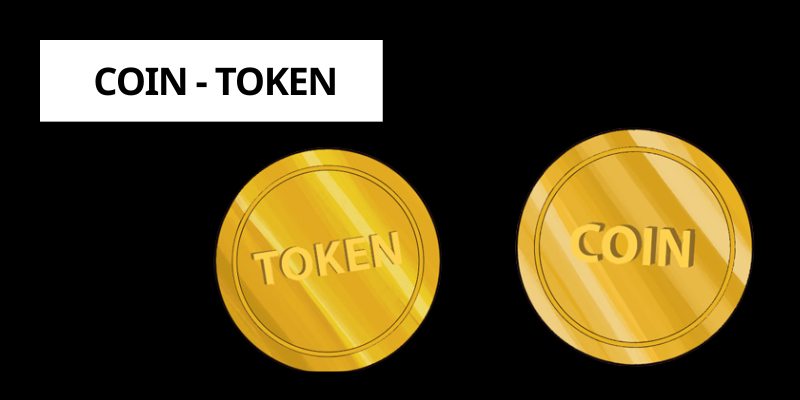The Difference Between a Coin and a Token in Cryptocurrency
The world of cryptocurrency is replete with technical jargon, and one of the most fundamental distinctions to grasp is the difference between a coin and a token. While both coins and tokens are integral to the blockchain ecosystem, they serve distinct purposes, operate on different technological frameworks, and cater to diverse use cases. This article delves into the difference between a coin and a token, exploring their definitions, functionalities, and implications for investors, developers, and users in the decentralized digital economy.
Contents
Defining Coins and Tokens
To understand the difference between a coin and a token, we must first define each term. A coin is a digital asset native to its own blockchain. It functions as a form of currency within that blockchain’s ecosystem, often used for transactions, governance, or as a store of value. Examples include Bitcoin (BTC), Ethereum (ETH), and Cardano (ADA). These coins operate on independent blockchains, each with its own consensus mechanisms, security protocols, and network rules.

In contrast, a token is a digital asset created and hosted on an existing blockchain, typically using smart contracts. Tokens do not have their own blockchain but leverage the infrastructure of platforms like Ethereum, Binance Smart Chain, or The Root Network. Tokens can represent a wide range of assets or utilities, such as digital collectibles (NFTs), governance rights, or access to specific services. Popular tokens include Tether (USDT), Chainlink (LINK), and Decentraland’s MANA. The difference between a coin and a token thus lies primarily in their technological foundation: coins are native to their blockchains, while tokens are built atop existing ones.
Technical and Functional Distinctions
The difference between a coin and a token extends beyond their definitions to their technical and functional roles. Coins are designed to serve as the primary medium of exchange within their respective blockchains. For instance, Bitcoin is used for peer-to-peer payments, while Ether (ETH) powers transactions and smart contract execution on the Ethereum network. Creating a coin requires building a new blockchain from scratch, a process that demands significant resources, technical expertise, and community support to ensure security and scalability.
Tokens, however, are easier to create because they utilize the infrastructure of an existing blockchain. Developers can issue tokens using standards like Ethereum’s ERC-20 (for fungible tokens) or ERC-721 (for non-fungible tokens). This accessibility makes tokens versatile, enabling a wide array of applications, from decentralized finance (DeFi) protocols to metaverse ecosystems like Futureverse. The difference between a coin and a token in this context is one of complexity and purpose: coins underpin entire blockchain ecosystems, while tokens enable specific functionalities within those ecosystems.
Use Cases and Applications
Another key aspect of the difference between a coin and a token is their use cases. Coins are primarily used as digital currencies or stores of value. Bitcoin, for example, is often likened to digital gold, while Ether facilitates transactions and decentralized application (dApp) development on Ethereum. Coins are also used for network governance, staking, and paying transaction fees (gas) on their respective blockchains.
Tokens, by contrast, have more diverse applications. They can represent assets (e.g., stablecoins like USDT pegged to fiat currencies), utility (e.g., access to services within a dApp), or ownership (e.g., governance tokens like UNI for Uniswap). In the context of Futureverse, tokens like ROOT, ASTO, and SYLO serve specific roles within the open metaverse, from transaction fees to AI-driven functionalities. The difference between a coin and a token in terms of use cases is thus rooted in their scope: coins are general-purpose currencies, while tokens are tailored to specific applications.
Implications for Investors and Developers
The difference between a coin and a token has significant implications for investors and developers. For investors, coins often represent long-term investments in a blockchain’s infrastructure. Bitcoin and Ethereum, for instance, have established themselves as blue-chip assets due to their robust networks and widespread adoption. Tokens, however, can be riskier, as their value often depends on the success of a specific project or dApp. Investors must evaluate the underlying blockchain, project fundamentals, and market dynamics when considering tokens.

For developers, the difference between a coin and a token influences project design. Building a new blockchain and coin requires substantial resources and a clear value proposition to compete with established networks. Tokens, on the other hand, offer a faster, more cost-effective way to launch projects, as developers can leverage existing blockchains’ security and infrastructure. Platforms like Futureverse simplify token creation through tools like the Dynamic Object Creator, enabling developers to issue NFTs and utility tokens for metaverse applications.
Challenges and Future Outlook
Despite their distinct roles, both coins and tokens face challenges, including regulatory scrutiny and market volatility. The difference between a coin and a token can also complicate regulatory classification, as coins are often treated as commodities, while tokens may be deemed securities depending on their structure. Scalability, user adoption, and security remain critical hurdles for both, though tokens benefit from the robustness of their host blockchains.
Looking ahead, the difference between a coin and a token will continue to shape the cryptocurrency landscape. Coins will likely remain the backbone of decentralized networks, while tokens drive innovation in DeFi, NFTs, and the metaverse. Platforms like Futureverse, with their focus on interoperability and user-centric ecosystems, highlight the complementary roles of coins and tokens in building scalable digital economies.